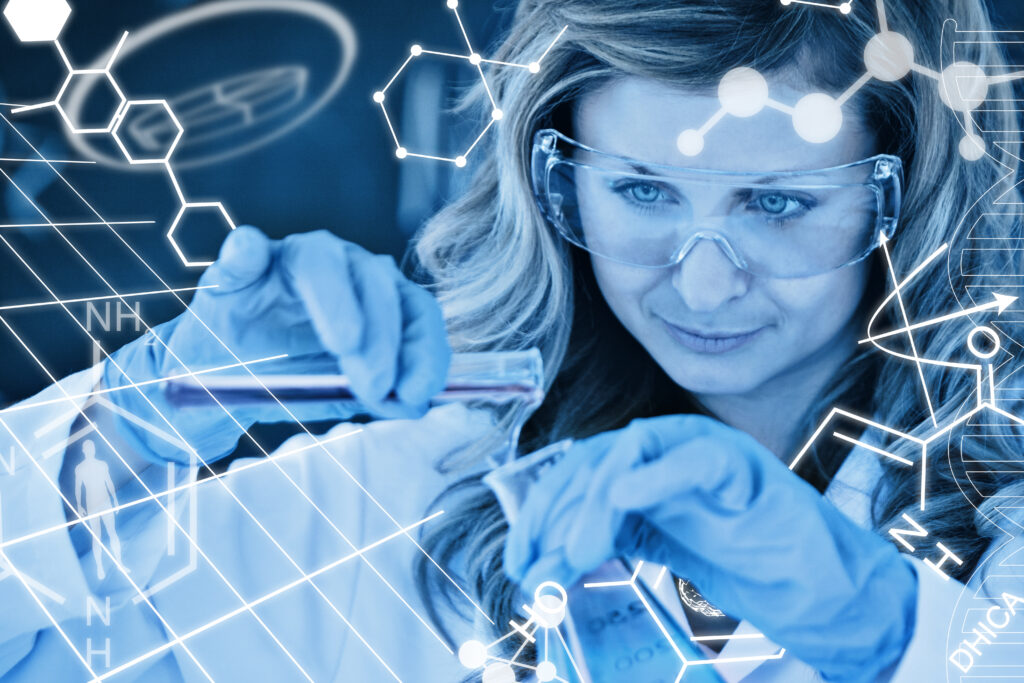Welcome to the captivating world of forensic science, where hidden clues and enigmatic evidence come together to unravel the mysteries behind criminal investigations. In this article, we will dive deep into the art of forensic science, exploring the tools, techniques, and brilliant minds that make it an essential part of modern crime-solving.
Forensic science is a multidisciplinary field that combines scientific principles with investigation skills to analyze crime scenes, collect evidence, and provide crucial insights into criminal activities. By utilizing various scientific techniques and methodologies, forensic experts strive to reconstruct events, identify perpetrators, and ensure justice is served.
Crime puzzles are like complex mosaics waiting to be deciphered. Forensic science serves as the key that unlocks these puzzles, piecing together fragments of evidence and painting a clear picture of the truth. From analyzing fingerprints to unraveling the secrets hidden within DNA, forensic science plays a pivotal role in identifying culprits, proving guilt, and providing closure to victims and their families.
Key Takeaways:
- Forensic science combines scientific principles and investigation skills to analyze crime scenes and collect evidence.
- By utilizing various techniques, forensic experts aim to reconstruct events and identify perpetrators.
- Forensic science plays a crucial role in solving crimes, proving guilt, and providing closure to victims and their families.
- Techniques like fingerprint analysis and DNA profiling are instrumental in identifying culprits and linking them to the crime.
- Meticulous analysis and attention to detail are essential in forensic science to ensure the accuracy and reliability of findings.
Understanding Forensic Science
Forensic science plays a critical role in the fascinating world of crime investigation. This interdisciplinary field combines scientific principles with legal expertise to uncover the truth behind criminal acts. By examining physical evidence, forensic scientists provide invaluable insights that aid in solving crimes and ensuring justice is served.
To fully comprehend the significance of forensic science, it is essential to understand its history, disciplines, and fundamental principles. Let’s embark on a journey of discovery to gain a comprehensive understanding of this captivating field.
The History of Forensic Science
The roots of forensic science can be traced back to ancient times when individuals such as Xi Yuan Gui in China and Cesare Lombroso in Italy made significant contributions to the field. However, it was the late 19th century when forensic science began to truly evolve. The groundbreaking work of Alphonse Bertillon, known as the father of criminal identification, and the pioneering research by Francis Galton on fingerprints laid the foundation for the modern forensic techniques we rely on today.
Disciplines within Forensic Science
Forensic science encompasses various disciplines, each specialized in analyzing a specific aspect of a crime. Some of the key disciplines include:
- Fingerprint Analysis
- Document Examination
- Firearms and Toolmark Analysis
- Forensic Toxicology
- DNA Analysis
- Forensic Anthropology
- Digital Forensics
By combining the expertise of professionals from these disciplines, forensic science provides a comprehensive approach to unraveling complex cases.
The Key Principles of Forensic Science
Forensic science operates on several key principles that guide investigations and ensure the accuracy and reliability of findings. These principles include:
- Locard’s Exchange Principle: Every contact leaves a trace, meaning every interaction between individuals or objects will leave behind physical evidence that can be analyzed.
- The Principle of Individuality: Each person and object is unique, and this uniqueness allows for identification and comparison of evidence.
- The Principle of Chain of Custody: Proper documentation and handling of evidence are essential to maintain its integrity and admissibility in court.
- The Principle of Context: Examining evidence within the broader context of the crime scene and surrounding circumstances provides valuable insights and helps piece together the puzzle.
These principles form the bedrock of forensic science, ensuring that investigations are conducted ethically, accurately, and thoroughly.
Understanding the intricacies of forensic science provides us with a window into the world of crime-solving, showcasing the meticulous work carried out by dedicated experts. As we dive deeper into the specific techniques employed in forensic science, we will unravel the methods that transform raw evidence into compelling proof.
Forensic Science Techniques
Uncover the various techniques used in forensic science to collect evidence and analyze crime scenes. From fingerprint analysis to DNA profiling, explore the methods that help investigators piece together the puzzle of a crime.
Fingerprint Analysis
Fingerprints are unique to each individual, making them a valuable tool in forensic investigations. By examining ridge patterns, loops, and whorls found on surfaces at a crime scene, forensic experts can identify and match fingerprints to potential suspects. This technique has been used for over a century, providing critical evidence that links perpetrators to the scenes of the crime.
DNA Profiling
One of the most groundbreaking advancements in forensic science, DNA profiling has revolutionized crime scene analysis. By analyzing genetic material found at the scene, such as blood, saliva, or hair, forensic scientists can create a profile that identifies potential suspects or excludes individuals from the investigation. DNA profiling has contributed to countless breakthroughs, leading to the solving of previously unsolvable cases.
Ballistics Analysis
Ballistics analysis involves the examination of firearms, cartridges, and bullet trajectories to determine their relationship to a crime. By studying firearm markings, striations, and patterns on bullets and cartridge cases, forensic ballistics experts can link specific firearms to crimes, providing crucial evidence in identifying perpetrators and reconstructing events.
Trace Evidence Analysis
Trace evidence analysis involves the examination of tiny, often microscopic, pieces of evidence left at a crime scene. These can include fibers, hairs, glass fragments, paint chips, or soil samples. By meticulously collecting and analyzing these trace materials, forensic scientists can establish connections between suspects, victims, and crime scenes, helping investigators paint a clearer picture of events.
Digital Forensics
In today’s digital age, criminals leave a digital footprint that can be instrumental in solving crimes. Digital forensics involves the examination of electronic devices, such as computers, smartphones, and tablets, to recover and analyze data. This can include uncovering deleted files, examining internet browsing history, or retrieving communication records. Digital forensics has become an essential tool in investigating cybercrimes and gathering evidence in a technologically driven world.
The Science Behind Forensic Investigations
Forensic investigations rely on the application of scientific analysis to uncover the truth behind criminal activities. The intricate relationship between forensic science and crime-solving is built upon the principles of chemistry, biology, and physics. By harnessing these fundamental scientific concepts, forensic experts can piece together the puzzle of a crime and identify the perpetrators.
In forensic investigations, chemistry plays a crucial role in analyzing various forms of evidence. By utilizing techniques such as chromatography and spectroscopy, forensic scientists can identify substances found at crime scenes, including drugs, chemicals, and residues. The meticulous analysis of chemical compositions provides valuable insights into the nature of crimes and helps establish connections between suspects and the crime scene.
Biology also plays an integral part in forensic investigations, particularly in cases involving DNA analysis. Through the examination of DNA samples collected from crime scenes, forensic scientists can establish genetic profiles and link suspects to the evidence. The advancements in DNA profiling techniques have revolutionized the field, enabling the identification of individuals with remarkable accuracy.
Furthermore, physics-based principles are employed to analyze physical evidence found at crime scenes. These can range from analyzing bullet trajectories using ballistics to examining blood spatter patterns to determine the sequence of events. By applying physics to forensic investigations, experts can reconstruct the dynamics of a crime and provide critical insights into how events unfolded.
Forensic investigations are a testament to the power of scientific analysis and its ability to unravel complex crime puzzles. Through the interdisciplinary collaboration of chemistry, biology, and physics, forensic science not only helps identify perpetrators but also ensures justice is served.
Scientific Principles in Forensic Investigations
The utilization of scientific analysis in forensic investigations can be summarized as follows:
- Chemistry: Analyzing substances and residues found at the crime scene
- Biology: DNA profiling and identification
- Physics: Examining physical evidence and reconstructing events
These scientific principles combined provide a comprehensive approach to forensic investigations, enabling investigators to delve deep into the details of a crime and uncover the truth.
| Scientific Principles | Applications in Forensic Investigations |
|---|---|
| Chemistry | Analyzing substances, residues, and chemical compositions at crime scenes |
| Biology | DNA profiling, identification, and establishing genetic connections |
| Physics | Examining physical evidence, reconstructing events, and analyzing trajectories |
The seamless integration of these scientific principles ensures the reliability and accuracy of forensic investigations, providing law enforcement agencies with the tools and knowledge necessary to solve even the most perplexing crimes.
Forensic DNA Analysis
Discover the transformative power of forensic DNA analysis in modern criminal investigations. Through advanced genetic techniques and profiling, DNA analysis has revolutionized the way crimes are solved, providing invaluable evidence and unraveling mysteries that were once unsolvable.
DNA profiling techniques, such as Polymerase Chain Reaction (PCR) and Short Tandem Repeat (STR) analysis, allow forensic scientists to extract and analyze genetic information from a variety of sources, including blood, saliva, and hair follicles. By comparing DNA samples found at crime scenes to known individuals or genetic databases, investigators are able to establish links between suspects and the evidence, strengthening their cases and ensuring justice is served.
One of the most significant advancements in DNA analysis is the creation of genetic databases, such as the Combined DNA Index System (CODIS). These databases contain DNA profiles from millions of individuals, including convicted offenders, arrestees, and missing persons. By cross-referencing crime scene DNA with the profiles stored in these databases, law enforcement agencies can identify potential suspects and generate leads, accelerating the process of solving crimes.
However, the use of forensic DNA analysis does not come without ethical considerations. The collection and storage of genetic information raise concerns regarding privacy, consent, and the potential for misuse. Striking a balance between the power of DNA analysis in criminal investigations and safeguarding individual rights is an ongoing challenge.
Forensic DNA analysis has transformed the investigation and prosecution of crimes, providing irrefutable evidence and giving a voice to the victims. However, we must always remain vigilant in upholding ethical standards and protecting individual privacy.
Advantages of Forensic DNA Analysis:
- Highly accurate and reliable in establishing identity
- Powerful tool for excluding or identifying suspects
- Can be used to link multiple crimes to a single individual
- Effective in solving cold cases and identifying unidentified remains
Limitations of Forensic DNA Analysis:
- Requires a viable DNA sample for analysis
- Potential for contamination of samples and false results
- Can only provide information on individuals with DNA profiles in databases
- Privacy concerns surrounding the collection and storage of genetic information
| Advantages | Limitations |
|---|---|
| High accuracy and reliability | Requires viable DNA sample |
| Powerful tool for excluding/identifying suspects | Potential for contamination and false results |
| Links multiple crimes to a single individual | Information limited to profiles in databases |
| Effective in solving cold cases | Privacy concerns with genetic information |
Forensic Toxicology
Forensic toxicology plays a crucial role in criminal investigations, aiding in the determination of drug presence, poisons, and harmful chemicals at crime scenes. This branch of forensic science utilizes various analytical methods to analyze bodily fluids, tissues, and other substances to uncover valuable evidence.
The analysis of toxicological samples provides critical information that can help investigators understand the circumstances surrounding a crime and identify potential suspects. By examining substances found in the body, toxicologists can determine if drugs were ingested, the type and quantity of drugs used, and the potential effects they may have had on the individual.
Drug analysis is a fundamental aspect of forensic toxicology, allowing experts to identify substances and understand the potential implications they may have on a criminal investigation. By employing sophisticated techniques such as gas chromatography-mass spectrometry (GC-MS) and liquid chromatography-tandem mass spectrometry (LC-MS/MS), toxicologists can detect and quantify drugs and their metabolites with remarkable accuracy.
“Forensic toxicology enables us to uncover hidden truths, revealing the presence of substances and their impact on a crime. Through meticulous analysis, we unveil the secrets that substances hold, aiding in the pursuit of justice.”
Forensic toxicology operates under strict scientific protocols to ensure the reliability and accuracy of its findings. By analyzing samples collected from a crime scene, toxicologists can provide vital information to investigators, enabling them to build a comprehensive picture of the events that unfolded.
The Role of Forensic Toxicology in Drug-Related Crimes
One of the critical applications of forensic toxicology is in drug-related crimes. Toxicologists work closely with law enforcement agencies to analyze substances seized during investigations, helping to identify illicit drugs, assess their purity, and establish a link between the substances and the crime.
The toxicological analysis of drugs goes beyond simple identification; it also involves understanding the potential effects of the substances on individuals. Toxicologists can determine the concentration of drugs present in bodily fluids and tissues, contributing to the assessment of drug-related impairment or toxicity.
Moreover, forensic toxicology can provide insights into drug use patterns and trends that aid in the assessment and development of effective drug prevention strategies. By analyzing drug samples confiscated in multiple cases, toxicologists can identify emerging drugs, monitor changes in drug purity or composition, and inform law enforcement agencies and policymakers about the evolving landscape of drug abuse.
Advancements in Forensic Toxicology
The field of forensic toxicology continues to evolve with advancements in technology, enabling more sensitive and efficient drug analysis. Mass spectrometry techniques, combined with innovative sample preparation methods, have significantly improved the ability to detect and quantify drugs at lower concentrations, increasing the chances of identifying substances in complex cases.
Additionally, the emerging field of toxicogenomics holds great promise for forensic toxicology. By examining the interaction between genes and toxic substances, toxicogenomic studies aim to understand individual differences in drug metabolism and response. This knowledge can provide valuable insights into drug interactions, personalized medicine, and the prediction of adverse drug reactions.
| Advancements in Forensic Toxicology | Impact |
|---|---|
| High-resolution mass spectrometry | Enhanced detection and identification of drugs at lower concentrations |
| Development of new sample preparation techniques | Improved extraction and purification of substances from complex matrices |
| Toxicogenomic studies | Insights into drug interactions and individual differences in drug metabolism |
Forensic Ballistics and Firearms Analysis
Forensic ballistics and firearms analysis involve the meticulous examination of firearms and projectiles to provide critical insights into criminal investigations. By studying bullet trajectories, gunpowder residue, and unique markings left on cartridges and casings, experts can link firearms to specific crimes, helping to solve even the most perplexing cases.
Ballistics analysis plays a crucial role in understanding the path a bullet takes from the moment it is fired to where it impacts its target. By examining the entry and exit wounds, as well as the trajectory in between, investigators can determine the direction, angle, and distance from which the shot was fired. This information can help reconstruct the events that unfolded during a crime and establish crucial pieces of evidence.
Firearms identification, on the other hand, focuses on the individual characteristics of firearms and ammunition. Every firearm and ammunition leave unique marks on the projectiles they fire, called striations and toolmarks. These marks act like fingerprints, differentiating one firearm from another. Experts use cutting-edge microscopy and comparison techniques to match these marks to a specific weapon, helping to identify the firearm used in a crime.
In forensic ballistics and firearms analysis, attention to detail is paramount. By carefully examining bullets, bullet fragments, casings, and firearms, experts can provide invaluable information that can lead to the identification of suspects and ultimately solve crimes.
The Role of Ballistics in Crime Scene Investigation
- Reconstructing the events of a crime
- Identifying the weapon used
- Determining the distance between the shooter and the victim
- Assessing the credibility of witness statements
Forensic Firearms Analysis Techniques
| Technique | Description |
|---|---|
| Microscopic Comparison | Examining unique toolmarks and striations on bullets and cartridge cases using high-powered microscopes. |
| Firearm Function Testing | Testing the functionality of a firearm to determine if it matches the evidence found at a crime scene. |
| Serial Number Restoration | Recovering serial numbers that have been intentionally altered or removed from firearms. |
| Gunshot Residue Analysis | Examining characteristic particles left by discharged firearms on the hands or clothing of suspects. |
Forensic Psychology and Behavioral Analysis
Uncover the power of forensic psychology and its invaluable contribution to criminal investigations. By combining psychological analysis with forensic science methodologies, experts can gain profound insights into the motivations and behavior of criminals, aiding in the identification and apprehension of suspects.
The Role of Forensic Psychology
Forensic psychology is a specialized branch of psychology that applies psychological theories and practices to legal matters. It involves the study of human behavior, cognition, and motivations in relation to criminal activities. By understanding the psychological underpinnings of criminal behavior, forensic psychologists can assist in building a comprehensive profile of the offender, facilitating the investigative process.
[“Forensic psychology helps to unravel the intricate tapestry of a crime scene, shedding light on the why behind the what. Through careful analysis of the criminal’s mind, forensic psychologists provide crucial insights that guide investigators toward the truth,” states Dr. Emma Roberts, a renowned forensic psychologist. “It’s like piecing together a complex puzzle, with every psychological clue bringing us closer to catching the perpetrator.”]
Criminal Profiling: Unveiling the Minds of Offenders
Criminal profiling, also known as offender profiling, is a crucial tool used by forensic psychologists to assist law enforcement agencies in identifying potential suspects. By analyzing crime scene evidence, witness statements, and other pertinent information, criminal profilers create a psychological profile of the unknown offender. This profile helps investigators narrow down their search and focus their efforts on individuals who match the unique characteristics and behavioral patterns revealed in the analysis.
[“Criminal profiling is like constructing a psychological jigsaw puzzle,” explains Detective Sarah Thompson, an expert in criminal profiling. “We examine the crime scene meticulously, analyze the modus operandi, and delve deep into the mind of the perpetrator. Through this process, patterns emerge, enabling us to develop a detailed profile that guides our investigation.”]
Behavioral Analysis: Decoding Criminal Minds
Behavioral analysis is another vital component of forensic psychology. By studying the behavior displayed by criminals, forensic psychologists can infer the underlying motivations, thought processes, and emotions driving their actions. This analysis helps investigators understand the unique signature behaviors of criminals, aiding in the identification and apprehension of suspects.
[“Behavioral analysis allows us to enter the mind of the criminal,” says Dr. James Anderson, a leading forensic psychologist. “By carefully examining the actions, choices, and patterns exhibited by offenders, we can piece together their psychological makeup. This understanding gives us valuable insights that empower law enforcement to bring them to justice.”]
Real-World Applications
Forensic psychology and behavioral analysis have been instrumental in numerous high-profile criminal investigations. Notable examples include the case of the Unabomber, Theodore Kaczynski, and the serial killer, Ted Bundy. In both cases, the expertise of forensic psychologists offered crucial insights into the mindset and behavioral patterns of these notorious criminals, ultimately leading to their identification and capture.
Whether it involves profiling a serial killer, understanding the motives behind a seemingly motiveless crime, or assessing the risk of reoffending, forensic psychology continues to play a pivotal role in unraveling the mysteries of criminal behavior.
Forensic Anthropology

Unearth the intriguing field of forensic anthropology, where experts examine human remains to determine identity, cause of death, and other critical information.
Forensic anthropology is a specialized branch of forensic science that focuses on the examination of skeletal remains to gather insights and solve complex mysteries. Through meticulous skeletal analysis, forensic anthropologists can provide crucial clues that help in criminal investigations and the identification of unidentified remains.
Skeletal analysis involves a comprehensive examination of bones, teeth, and other skeletal elements. By studying the patterns, structure, and characteristics of human remains, forensic anthropologists can uncover valuable information about an individual, including age, sex, height, and possible signs of trauma or disease.
One of the key aspects of forensic anthropology is the establishment of a biological profile from skeletal remains. This profile includes the age at death, sex, ancestry, and stature of the individual, all of which aid in narrowing down potential suspects or identifying missing persons.
In addition to personal characteristics, forensic anthropology plays a crucial role in determining the cause and circumstances of death. By examining skeletal injuries, trauma, and any other evidence present on the remains, forensic anthropologists can provide insights into the events leading to the individual’s demise.
Moreover, forensic anthropologists may assist in the reconstruction of facial features based on the shape and structure of the skull, allowing for the creation of facial approximations to aid in identification efforts.
Overall, the field of forensic anthropology combines scientific analysis, anatomical expertise, and investigative skills to uncover the truth hidden within human remains. It is a vital component of forensic science that contributes to the resolution of countless criminal cases, providing answers to families and justice for victims.
The Future of Forensic Science
As technology rapidly evolves, the future of forensic science holds immense promise and potential. Technological advancements are revolutionizing investigative techniques, enabling forensic scientists to delve even deeper into the world of crime-solving. One of the most significant developments is the integration of artificial intelligence (AI) in forensic analysis.
AI-driven analysis enhances the speed and accuracy of processing large volumes of evidence, allowing investigators to uncover crucial leads more efficiently. By harnessing the power of machine learning algorithms, forensic scientists can identify patterns, detect anomalies, and make connections that might have otherwise gone unnoticed.
Furthermore, cutting-edge imaging technologies are pushing the boundaries of forensic science. High-resolution and three-dimensional imaging techniques enable experts to capture detailed and accurate representations of crime scenes, evidence, and even human remains. This level of precision provides investigators with invaluable insights that aid in the reconstruction of events and the identification of potential suspects.
With advancements in DNA sequencing technologies and the growing prevalence of genetic databases, forensic science is poised to make even greater strides in the future. The ability to extract information from minuscule traces of DNA opens up new possibilities for solving cold cases and identifying unknown perpetrators.










































